How To Start Mountain Biking For Beginners
/ Beginners / How To Start Mountain Biking For Beginners
Mountain bikes take the experience to the next level. Just imagine the wind caressing your cheeks as you scale through peaceful trails untouched by human feet. But while many road bikers and pedestrians want to start mountain biking, they don’t know where to begin. Well, we’re here to answer all your questions regarding how to start mountain biking for beginners and what you’ll need.
Mountain Biking requires a lot more than just a bike and a trail. You need safety gear, anti-theft devices, a solid understanding of riding techniques, and a community to cheer you on.
Below is a step-by-step guide on how you can start mountain biking. Each section touches upon a different aspect of MTB, so read them all carefully.
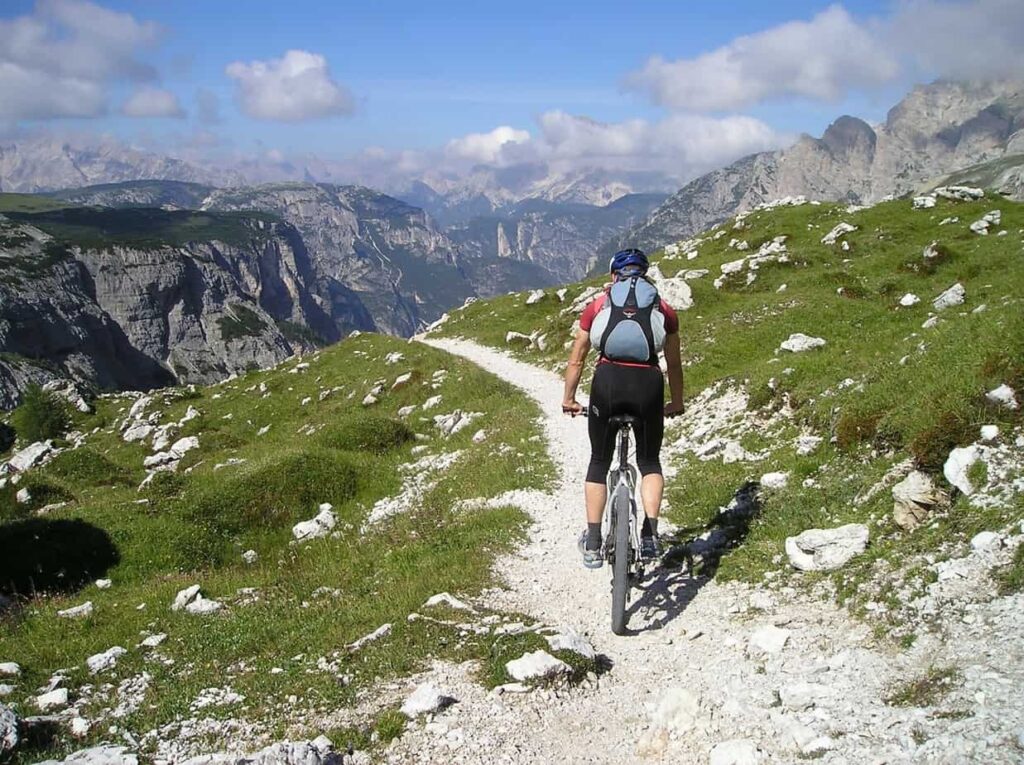
Choosing your First Mountain Bike
Before you learn how to start mountain biking, you need to get yourself a bike. Perhaps one of the most daunting first tasks, choosing a bike, requires extensive knowledge of mountain bikes. But you can always look for some key features or just go for what the expert suggests.
How much does it Cost to Start Mountain Biking?
You’ll find that it’ll help you a lot if you can first settle on a decent budget. The $500 mark is the lowest you should be willing to go for a mountain bike. A decent bike made for off-road performance would normally cost you $700 to $1500. A good entry level mountain bike will range around $1500-2500. Once you get hooked you will find some top of the line bikes can cost as much as $10,000…. Crazy right.
One last option you have is to rent out a used or refurbished bike for a discounted price and practice on that.
Features To Look For
Look out for certain features that will ensure a safer and faster ride. Particularly, check out the different types of transmissions the bike offers. Some will go as high as 7 or 8 transmissions.
Wheel Size
Take special note of the wheel size, especially if you’re on a lengthier trail. Wider diameters are preferred for longer rides. And shorter but stronger wheels are for tougher trails. The most common wheel diameters nowadays are 27.5 inches and 29 inches.
Suspension
One last thing to keep an eye out for is the suspension. You have the option to choose between a hardtail and a full-suspension bike. Hardtail bikes are the best for an entry-level biker as they don’t cost much and have no rear suspension.
However, full-suspension bikes are getting more advanced, and you should upgrade to one after you get the hang of your bike.
If you want our opinion on which bike is best for beginners, then look into a bike like diamondback Release. It has excellent balance and is perfect for getting your feet used to. It’s highly recommended for younger bikers who are just getting started. For more on brands and bikes, see our post on the best brands.
What Do I need to Start Mountain Biking?
So now you have your bike and want to learn how to start mountain biking. But wait, don’t hit the trail just yet! You need some safety gear before you can start growing-in on your cycle.
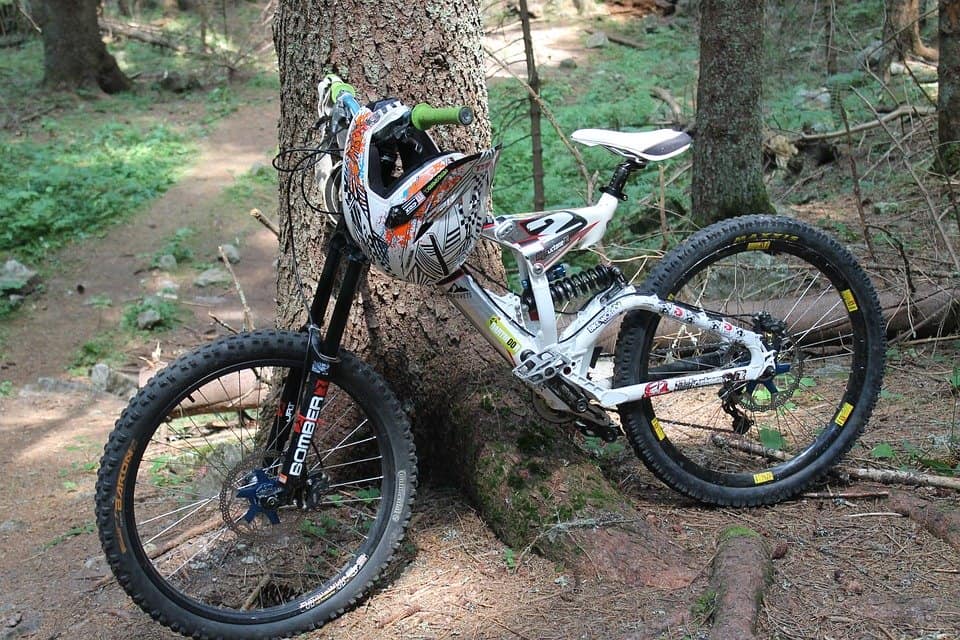
Buy A Helmet
The first and foremost gear you should purchase should be a cycling helmet. You never know when disaster can strike, especially if this is your first time cycling off-road. An ample amount of helmets employ MIPS, such as the Giro Fixture for Adults.
Get Comfortable
It’s not just the helmet that you’ll want to consider. You may need to change up your dressing style when you hit the trail. Both professional and amateur cyclists prefer to wear light, airy clothes with knee or thigh-length shorts. Refrain from wearing long-sleeved pants, as they tend to inhibit pedal movement.
Also, invest in special biking gloves and pads. These gloves will prevent your hands from chaffing against the rubber of the handlebars. Pads for your elbows, knees, and groin, prevent dislocations and sprains.
Buy A Handy Backpack
Consider purchasing a backpack to take all your essentials in. The Osprey Raptor 10 Hydration Backpack is one of the best backpacks for this purpose. It has an ample amount of storage paired with a reflective back and a soft fabric.
Inside your backpack, you’ll want to keep a water bottle, some food, and safety equipment such as ropes, a flashlight, and even a Swiss Army Knife. Also pack up on lubricants, anti-chaff sticks, and maintenance equipment. A bicycle pump is one such essential that you must have on you at all times, in case of a flat tire.
Secure Your Bike
Finally, to keep your mountain bike secure, consider buying an anti-theft device. These are getting sneakier and cleverer by the hour. But if you don’t park your bike that often, you can skip this step.
And now you’re all set to go on your very first mountain bike ride!
Is Mountain Biking Hard to Learn?
Before you can properly learn how to start mountain biking, it’s essential to get to know your bike first. Set up everything and keep it slow and steady. Let the gears and derailleur get used to the momentum.
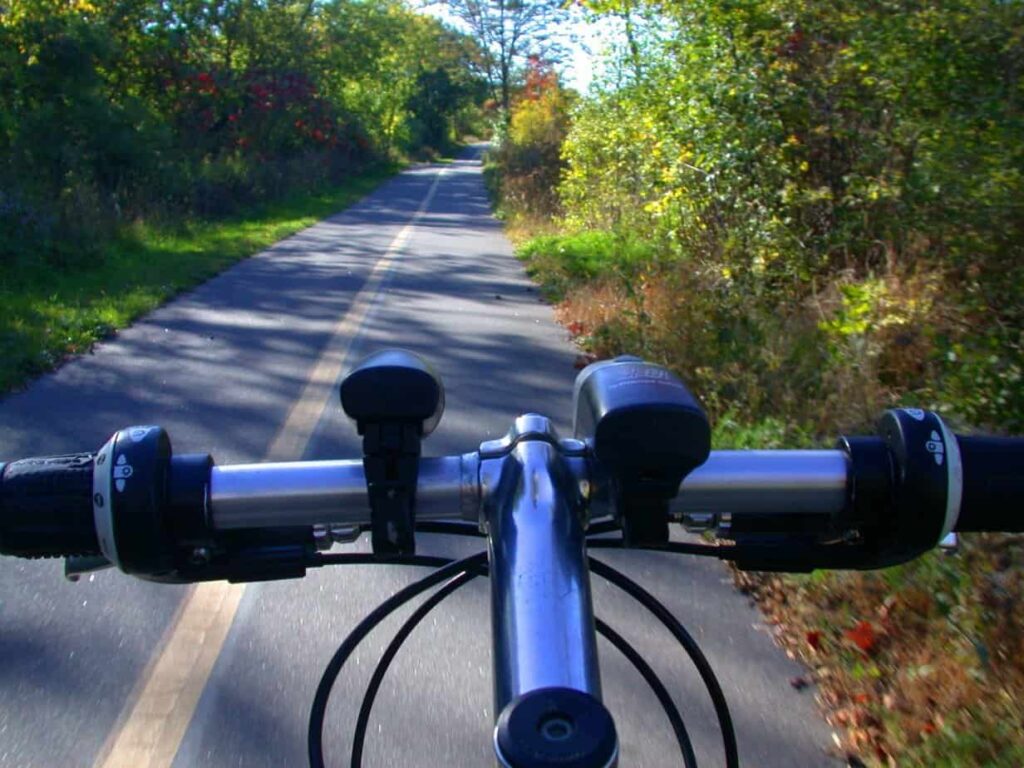
Adjust The Seat and Handlebars
If the seat is adjustable, then keep experimenting with different seating heights. If not, you can purchase a saddle that can increase the height of your seat. But a higher seat means your legs should be long enough to reach the pedals.
The same goes for the handlebars. Experiment with different heights and find the one that suits you. It is crucial to take your bike for test rides in various seating positions. Only a long, exasperating ride will highlight any posture problems or joint pains your current seat height is causing you.
Learn The Basics
Now that you’ve decided the best posture for yourself, it’s time to learn some mountain bike ethics. The first and foremost thing you’re taught is to keep your head straight and always look ahead. It may get harder if your posture is slouching down, so adjust accordingly.
Learn how to brake and pedal under different terrains. You’ll find that braking too often (and too hard) will cause you to lose your balance. Instead, use your speed to your advantage and only brake when needing to stop or going downhill.
The best way to brake is to clamp both your front and rear brakes as gently as you can. It will prevent an abrupt stop that can either flip you over or cause you to skid.
Start on Flat Land
Now it’s time to mount your bike and get on your first trial! Choose a location that doesn’t have too many pedestrians and hikers, but isn’t too unfrequented either, in case something comes up.
It’s always a good idea to scout your trail on foot first. Especially near your starting spot, check for where the hills and bumps are. Don’t avoid them, though. That’s what your bike is made to do.
Take It Slow
Start pedaling slow and steady, picking up pace as the gears start churning. Stay focused on the road ahead, and always be aware of your surroundings.
As you gain pace, shift into the next gear. Your bike will have a gear shifting mechanism somewhere. If you’re not familiar with this, shifting gears means that you’re increasing the max speed you can ride at.
If your bike has a 7 to 8-speed transmission, stick to just the first 5 for now. You don’t want to ride at higher speeds, especially if there’s pedestrians and other bikers nearby.
How do I start Training for Mountain Biking?
When you first start training to learn how to mountain bike, remember to ride on the speed rather than the brakes. Higher speed will let you maintain momentum, which in turn increases the efficiency of your bike. Learn to use this momentum to your advantage, and you’ll stay in control of your bike.
One other important strategy when mountain biking is shifting your weight. You may have seen some people do this when they shift to the far left or right on a motorcycle. The same concept applies here, except you’ll be shifting forward and backward.
It allows you to retain the center of gravity on the rear wheel, preventing yourself from falling down or back. You’ll be using this technique quite frequently when going up or down the hill. So read on to learn how to overcome a slope.
Master The Slope
It is the trickiest part about learning how to start mountain biking, and possibly the most intimidating. Many riders are afraid to go down or up hills, mainly because they’ve never done so before. But just because you haven’t done something doesn’t mean you should never try.
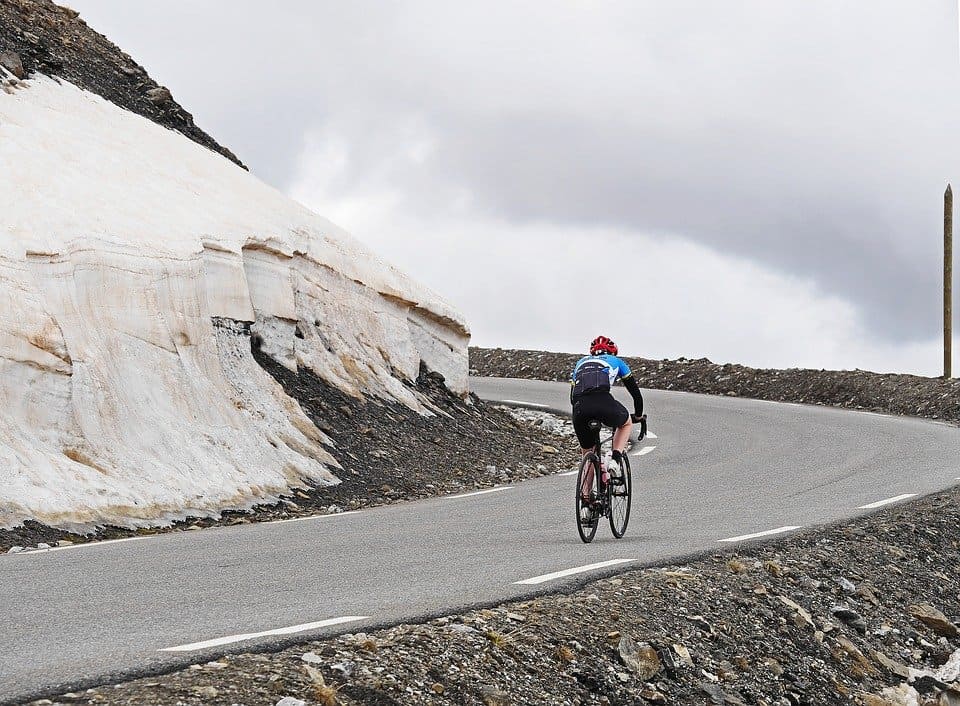
Going Uphill
When cycling off-road, for the most part, gravity is your friend. But if you’re not careful enough, you could end up falling backward and down the hill.
To combat gravity and a shift in the center of weight, pick up speed and lean forward. When you lean forward, you’re directing your weight to the rear of the bike, keeping it grounded. It is important to never stand up from your seat. It will only ruin your weight and lead to a fall.
Instead, stay seated and pedal at a moderate speed. Don’t over-pedal, as you don’t want to exhaust the chain or yourself.
It is best to practice on flatter hills before you try steeper ones. It won’t happen in one day, so be patient and take baby steps towards your goal.
Going Downhill
A downslope requires almost the exact opposite strategy when going uphill. You need to lean backward to distribute your weight over the bike’s front and remember to relax. Keep your elbows and knees out, in case you flip and need them to break your fall.
It is preferable here to stand up from your seat to relax the weight from your bike further. But some people may still be scared of doing this, so take your time. Have a friend accompany you and demonstrate the correct process.
Always try on a flatter downhill and look out for obstacles. Something as small as a rock can send you flipping over and hurting yourself.
Now Get Biking!
And that’s it! You’re all set up for mountain biking!
Now that you know how to start mountain biking, you can indulge in the local bike club. There’s a large community of bikers (both mountain and road) that can help you and give you advice. A good place to look would be the local bike shop. You can meet some experienced experts as well as newbies like yourself.
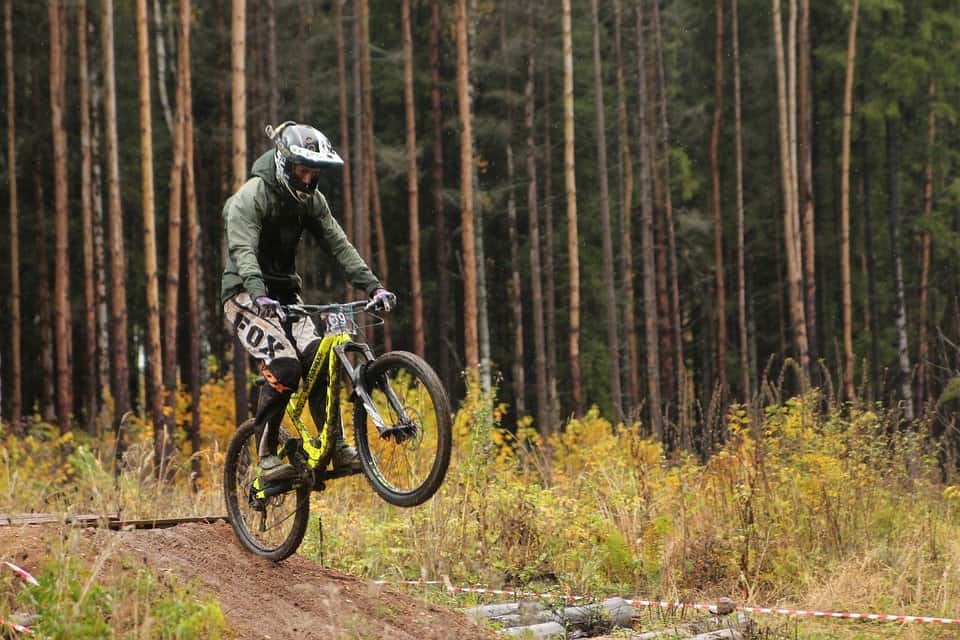
Another place to look would be social media. You can join Facebook and WhatsApp groups where you can meet a welcoming society of mountain bikers. There are also some trail finding apps where you can make some great friends and hone your skills.
Never be rude to other riders or speed when there are pedestrians around. In life, you get what you give. You will be giving the biking society a bad name and losing potential friends. The road belongs to no one person. So stick to the rules, and you should be good.
Keep upgrading your bike by adding components and changing out the suspension. You can save up and go for a better bike, meant for more experienced users. For now, just keep polishing your skills and get familiar with the route.
Maintaining Your Bike
Your mountain bike is your responsibility. You are the one accountable for its maintenance and cleaning. If you want your bike, you last you for years, then always be sure to perform daily checks.
Daily Checks
Look for any obvious signs of damage every once in a while. Sometimes the damage will become apparent when you’re on the trail. But a lot of the times, you can’t take that risk. Always check your tires for potential punctures and weak spots.
Oil the chain and check for any visible damage or wear on the teeth. And keep a good account of the pressure in your suspension forks.
Weekly Checks
After every week or so, consider cleaning the fenders and the entire frame of your mountain bike. It’s recommended to only wipe with a damp cloth and do not use running water or any harsh chemicals.
If your tires are starting to wear out, replace them with a similar one. Some mountain bikes use tubeless tires. So take note of the numbers on the side of your tire, and find a tire that fits that rating, preferably one from the same manufacturer.
Brake Bleeding
There’s another process that professional mountain bikers carry out called “bleeding the brakes.” If you don’t know how to do this, please consider taking your bike to a local shop and ask a professional to do it. You don’t want to get this wrong.
Conclusion
For many people, mountain biking is a way to escape from the stress of your daily life. And for others, it’s just a fun little hobby, a way to get your adrenaline pumping.
Now you know how to start mountain biking! Mountain biking requires a lot of preparation, practice, and hard work to get the hang of. But you don’t have to be perfect. Once you get to know your fellow bikers, you’ll find that a lot of them are just there for fun.
So always wear a helmet, never give up, and keep improving your skills!
Related Articles
What Are Mountain Bike Rock Gardens?
Oli L • September 5, 2022
So you're getting into mountain biking and not sure what mountain bike rock gardens are. Riding rock gardens on a mountain bike is a skill to learn when you first start riding. You might have thought that most trails will be smooth and easy to navigate through but remember that each trail is different. Preparing for these obstacles will help you become a better mountain biker. Rock gardens can come...
The Full Suspension Vs. Hardtail Debate Continues
Oli L • August 28, 2022
The full suspension vs. hardtail debate continues as we look at the pros and cons of each type of bike. Both full suspension and hardtail mountain bikes are great options if you want to start mountain biking. But what do you really need to know about each type before buying one? Mountain biking has exploded in popularity in recent years. The sport involves riding through singletracks mostly in beautiful mother...
6 Mountain Bike Maintenance Tips For Beginners
Oli L • August 8, 2022
There are many different types of mountain bikes out there. But, they all have one thing in common – ongoing maintenance. Mountain bike maintenance can be tricky if you don’t know what you’re doing, you could end up damaging your bike or even yourself. Mountain bikes require proper maintenance to keep everything running smoothly. In this article, we'll show you what to do when things go wrong as a beginner...
8 Steps To Becoming A Better Mountain Biker
Oli L • June 13, 2022
Mountain biking is an activity that requires skill, strength, endurance, and balance. It’s also a great way to stay fit and enjoy the outdoors. But before you hit the trails, there are a few things you need to know to become a better mountain biker. The activity requires both strength and skill. It’s also a sport that has become increasingly popular in recent years. To improve your riding skills, you...
5 Mountain Bike Racing Tips for Beginners
Oli L • June 10, 2022
Mountain bikes are becoming increasingly popular in recent years. They offer an exciting way to explore the outdoors. It also offers many physical and mental health benefits on top of the friendly competition that many enjoy. We're going to go over 5 mountain bike racing tips for beginners to help you get going. MTB racing is an exciting sport that combines speed, agility, and strength in a way that few...
Latest Articles
Popular Articles
Product Of The Week
Monday 5th May
